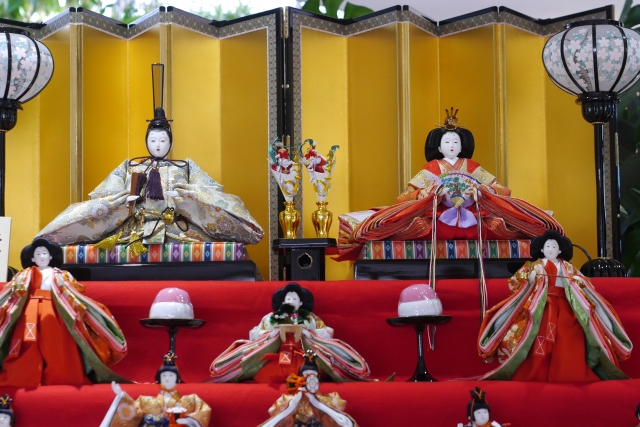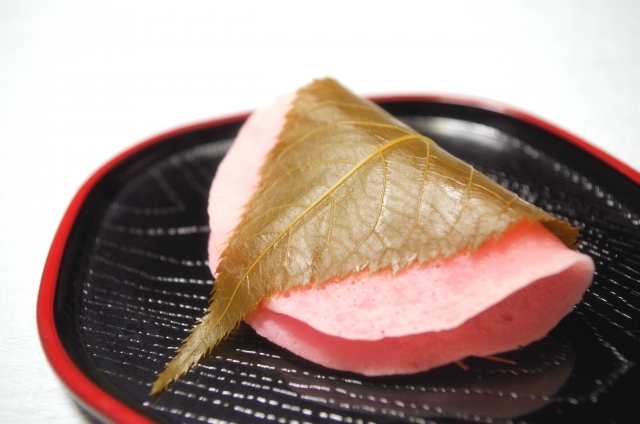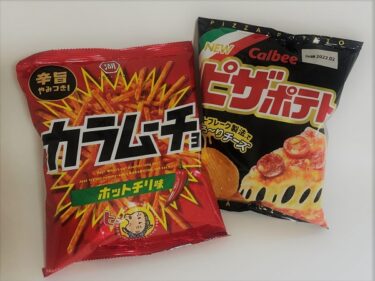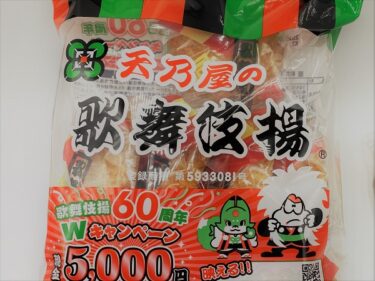A Japanese confectionery made by wrapping cherry-colored rice cakes in salted cherry leaves. In Japan, there is an event called Hinamatsuri on March 3rd to celebrate the growth of girls, and it is one of the chicks prepared there. It is also often prepared for cherry blossom viewing. Therefore, it is a sweet to eat from March to April.

There are two types of Sakuramochi, Tokyo style and Osaka style. By the way, the leaves can be eaten softly, but you can enjoy the sweetness and aroma of the sweets if you leave them.
What is Sakuramochi and can I eat it?
Materials of Sakuramochi
Tokyo style rice flour, wheat flavor, cherry leaves, sugar, food coloring, red bean paste
Osaka style rice flour, cherry leaves, sugar, food coloring, red bean paste
| Gluten-free※ | Low FODMAPs | |||
| for Vegetarian |
| Food supermarket | Convenience store | Cake shop |
Sakuramochi has Tokyo-style and Osaka-style
There are two types of sakuramochi, Tokyo-style and Osaka-style. The time when Tokyo-style sakuramochi was born is older, but it is not well known in areas other than the suburbs of Tokyo. It has a crepe-like skin-rolled shape. Also known as “Chomeiji Moshi”.
The characteristic of Osaka style is that it uses rice flour called “Domyoji flour”, so it looks like crushed rice. This is more famous nationwide.
History of Tokyo-style Sakuramochi

Sakuramochi was mentioned in the literature in the middle of the Edo period.
The gatekeeper of a temple called Chomeiji in Tokyo wondered if the leaves falling from the cherry blossoms along the Sumida River could be used for something when sweeping.

The origin of Sakuramochi is that the leaves of the cherry blossoms are salted and wrap rice cakes and red bean paste with salted leaves. Another name for Tokyo-style Sakuramochi is “Chomeiji Mochi” after the name of this temple.
Originally, it was a sweet that was offered to worshipers at the temple. The name of this gatekeeper is Mr. Shinroku Yamamoto, who later opened a Japanese sweets stores.
Histry of Osaka-style Sakuramochi

Make mochi from “Domyoji flour”, which is coarse glutinous rice flour, put bean paste inside, and wrap it in cherry blossom leaves.
It is now made with a hint from Sakuramochi, which was popular in the Tokyo region. By the way, another name, “Domyoji”, is also the name of the temple and is considered to be the origin of the Domyoji flour.
Try to eat Sakuramochi!
How much ?
$ 2-3
Where can I get Sakuramochi ?
It is recommended to purchase at a Japanese sweets store. You can buy it at food supermarkets and convenience stores during the cherry blossom season.
The Japanese sweets store of Mr. Shinroku Yamamoto, the gatekeeper of Chomeiji Temple, which invented Sakuramochi, continues for more than 300 years.
The name is “Chomeiji Sakuramochi”. It’s near Tokyo Sky Tree, a tourist attraction in Tokyo. However, during the cherry blossom season, it is very crowded. The store’s website also has an English page. It is introduced that the store became the subject of Ukiyo-e.

Precautions when eating Sakuramochi
Sakuramochi uses only plant materials. Osaka-style Sakuramochi is gluten-free. Please note that Tokyo style sakuramochi uses wheat flour.
Japanese writer’s comment for Sakuramochi
Even if you smell the cherry blossom trees while watching the cherry blossoms, you will not smell Sakuramochi.
The leaves of the cherry blossoms used in Sakuramochi are fragrant because they are fermented by salting and produce an aromatic substance called coumarin.
By wrapping this around the surface of the rice cake that wraps the bean paste, the saltiness and aroma are transferred to the confectionery, which enhances the sweetness of the bean paste. The leaves also have the effect of preventing the rice cake from drying out.
Like teriyaki sauce and mitarashi dango, it is a Japanese sweet with a taste of “amajoppai” that is a combination of sweetness and saltiness. It feels the same as people who are more than 300 years ago!



